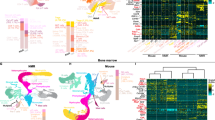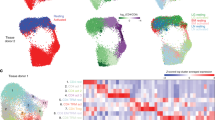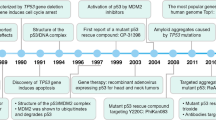Abstract
The transcription factor STAT5 is critical for peripheral NK-cell survival, proliferation, and cytotoxic function. STAT5 refers to two highly related proteins, STAT5A and STAT5B. In this study, we verified the importance of STAT5A isoform for NK cells. We characterized an incidental chemically induced W484G mutation in the Stat5a gene and found that this mutation was associated with a reduction of STAT5A protein expression. Closer examination of NK-cell subsets from Stat5a mutant mice showed marked reductions in NK-cell number and maturation. IL-15 treatment of Stat5a mutant NK cells exhibited defective induction of both STAT5 and mTOR signaling pathways and reduced expression of granzyme B and IFN-γ. Finally, we observed that Stat5a mutant mice revealed more tumor growth upon injection of RMA-S tumor cell line. Overall, our results demonstrate that the W484G mutation in the linker domain of STAT5A is sufficient to compromise STAT5A function in NK-cell homeostasis, responsiveness, and tumoricidal function.
This is a preview of subscription content, access via your institution
Access options
Subscribe to this journal
Receive 6 digital issues and online access to articles
$119.00 per year
only $19.83 per issue
Buy this article
- Purchase on Springer Link
- Instant access to full article PDF
Prices may be subject to local taxes which are calculated during checkout


Similar content being viewed by others
References
Paul S, Lal G. The molecular mechanism of natural killer cells function and its importance in cancer immunotherapy. Front Immunol. 2017;8:1124.
Sojka DK, Plougastel-Douglas B, Yang L, Pak-Wittel MA, Artyomov MN, Ivanova Y, et al. Tissue-resident natural killer (NK) cells are cell lineages distinct from thymic and conventional splenic NK cells. Elife. 2014;3:e01659.
Marcais A, Cherfils-Vicini J, Viant C, Degouve S, Viel S, Fenis A, et al. The metabolic checkpoint kinase mTOR is essential for IL-15 signaling during the development and activation of NK cells. Nat Immunol. 2014;15:749–57.
Lin JX, Du N, Li P, Kazemian M, Gebregiorgis T, Spolski R, et al. Critical functions for STAT5 tetramers in the maturation and survival of natural killer cells. Nat Commun. 2017;8:1320.
Imada K, Bloom ET, Nakajima H, Horvath-Arcidiacono JA, Udy GB, Davey HW, et al. Stat5b is essential for natural killer cell-mediated proliferation and cytolytic activity. J Exp Med. 1998;188:2067–74.
Villarino AV, Sciume G, Davis FP, Iwata S, Zitti B, Robinson GW, et al. Subset- and tissue-defined STAT5 thresholds control homeostasis and function of innate lymphoid cells. J Exp Med. 2017;214:2999–3014.
Cook MC, Vinuesa CG, Goodnow CC. ENU-mutagenesis: insight into immune function and pathology. Curr Opin Immunol. 2006;18:627–33.
Kennedy JM, Fodil N, Torre S, Bongfen SE, Olivier JF, Leung V, et al. CCDC88B is a novel regulator of maturation and effector functions of T cells during pathological inflammation. J Exp Med. 2014;211:2519–35.
Torre S, Polyak MJ, Langlais D, Fodil N, Kennedy JM, Radovanovic I, et al. USP15 regulates type I interferon response and is required for pathogenesis of neuroinflammation. Nat Immunol. 2017;18:54–63.
Quwailid MM, Hugill A, Dear N, Vizor L, Wells S, Horner E, et al. A gene-driven ENU-based approach to generating an allelic series in any gene. Mamm Genome. 2004;15:585–91.
Caignard G, Eva MM, van Bruggen R, Eveleigh R, Bourque G, Malo D, et al. Mouse ENU mutagenesis to understand immunity to infection: methods, selected examples, and perspectives. Genes. 2014;5:887–925.
Caignard G, Leiva-Torres GA, Leney-Greene M, Charbonneau B, Dumaine A, Fodil-Cornu N, et al. Genome-wide mouse mutagenesis reveals CD45-mediated T cell function as critical in protective immunity to HSV-1. PLoS Pathog. 2013;9:e1003637.
Fodil N, Langlais D, Moussa P, Boivin GA, Di Pietrantonio T, Radovanovic I, et al. Specific dysregulation of IFNgamma production by natural killer cells confers susceptibility to viral infection. PLoS Pathog. 2014;10:e1004511.
Mancini M, Caignard G, Charbonneau B, Dumaine A, Wu N, Leiva-Torres GA, et al. Rel-dependent immune and central nervous system mechanisms control viral replication and inflammation during mouse herpes simplex encephalitis. J Immunol. 2019;202:1479–93.
Desrosiers MP, Kielczewska A, Loredo-Osti JC, Adam SG, Makrigiannis AP, Lemieux S, et al. Epistasis between mouse Klra and major histocompatibility complex class I loci is associated with a new mechanism of natural killer cell-mediated innate resistance to cytomegalovirus infection. Nat Genet. 2005;37:593–9.
Karre K, Ljunggren HG, Piontek G, Kiessling R. Selective rejection of H-2-deficient lymphoma variants suggests alternative immune defence strategy. Nature. 1986;319:675–8.
Yuki KE, Marei H, Fiskin E, Eva MM, Gopal AA, Schwartzentruber JA, et al. CYRI/FAM49B negatively regulates RAC1-driven cytoskeletal remodelling and protects against bacterial infection. Nat Microbiol. 2019;4:1516–31.
Gotthardt D, Putz EM, Grundschober E, Prchal-Murphy M, Straka E, Kudweis P, et al. STAT5 is a key regulator in NK cells and acts as a molecular switch from tumor surveillance to tumor promotion. Cancer Discov. 2016;6:414–29.
Clinthorne JF, Beli E, Duriancik DM, Gardner EM. NK cell maturation and function in C57BL/6 mice are altered by caloric restriction. J Immunol. 2013;190:712–22.
Kastrukoff LF, Lau AS, Takei F, Carbone FR, Scalzo AAA. NK complex-linked locus restricts the spread of herpes simplex virus type 1 in the brains of C57BL/6 mice. Immunol Cell Biol. 2015;93:877–84.
Brizic I, Lenac Rovis T, Krmpotic A, Jonjic S. MCMV avoidance of recognition and control by NK cells. Semin Immunopathol. 2014;36:641–50.
Acknowledgements
We would like to thank P. D’Arcy for her technical assistance on animal husbandry and injection. We are grateful to the following core facilities: the Life Science Complex Cell Vision Core Facility for flow cytometry (Mcgill University) and The Centre for Phenogenomics, Infection and Inflammation Core (Toronto, Canada),
Author information
Authors and Affiliations
Contributions
SC and GALT performed the experiments. SC, GALT, and SMV designed and analyzed the experiments. BC assisted with animal experiments. RE and GB performed the initial exome sequencing. SC and SMV wrote the manuscript. All authors reviewed and edited the manuscript.
Corresponding author
Ethics declarations
Conflict of interest
The authors declare that they have no conflict of interest.
Additional information
Publisher’s note Springer Nature remains neutral with regard to jurisdictional claims in published maps and institutional affiliations.
Supplementary information
Rights and permissions
About this article
Cite this article
Chehboun, S., Leiva-Torres, G.A., Charbonneau, B. et al. A point mutation in the linker domain of mouse STAT5A is associated with impaired NK-cell regulation. Genes Immun 21, 136–141 (2020). https://doi.org/10.1038/s41435-019-0088-6
Received:
Revised:
Accepted:
Published:
Issue Date:
DOI: https://doi.org/10.1038/s41435-019-0088-6



